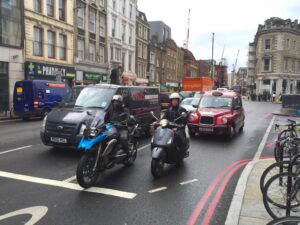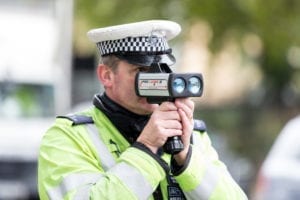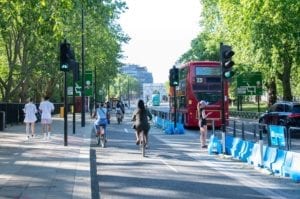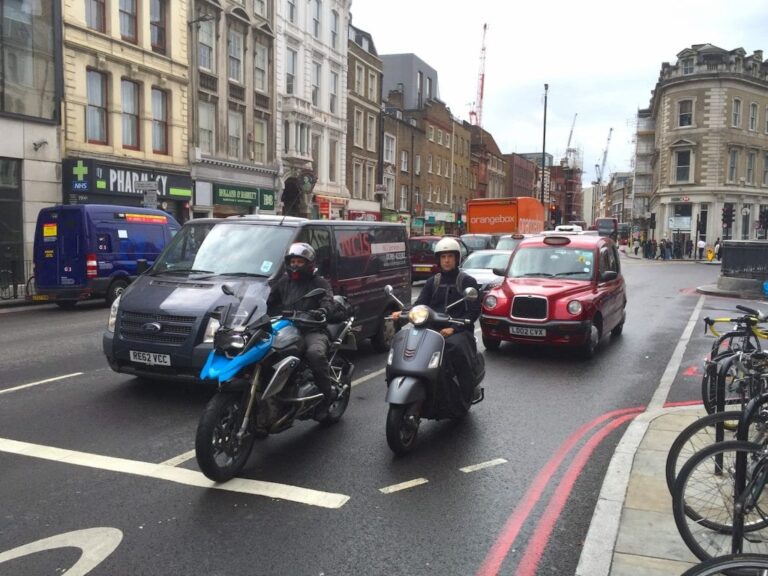The number of motorcyclists and cyclists killed in road traffic collisions in London has risen during lockdown compared with the same period last year, according to statistics released by Transport for London (TfL).
Since 20 March, there have been 10 motorcyclists killed on London’s roads, with two people walking and two cycling.
During this time, a total of 16 people have died on London’s roads – eight fewer than during the same period last year – despite an average reduction of 35% in traffic levels.

According to TfL, there has been an increase in speeding since the lockdown began, with the Metropolitan Police and City of London Police reportedly recording speeds of over 130mph during speed enforcement activity across the capital.
As such, TfL is urging Londoners to drive safely as large numbers of people walk and cycle, and significant temporary infrastructure changes are made across the UK capital to protect them.
Siwan Hayward, TfL’s director of compliance and policing, said: “We’re working closely with the mayor and local boroughs to provide a huge range of new walking and cycling facilities, ensuring Londoners can get around safely as lockdown measures are eased.

“Drivers are reminded that a number of road layouts may have changed and with more people walking and cycling, it is more critical than ever to slow down, drive carefully and within the speed limit.
“Enforcing safe speeds remains a priority for ourselves and the police, and action will be taken against drivers found to be putting themselves and other road users at risk.”
Changes to road layouts are being rolled out through TfL and mayor Sadiq Kahn’s Streetspace for London plan.
In the past month, footways and bus platforms have been extended across the capital, creating an additional 19,000m² of space for people walking and cycling.
In total, 21 Streetspace schemes have now been completed, including expanded footways outside busy commuter hubs such as London Bridge, Victoria and Waterloo stations and a new cycle lane on Park Lane.
The speed limit on Park Lane has been reduced from 40mph to 20mph to reduce road danger further, and TfL plans to introduce 20mph speed limits on more main roads across the capital as part of the Streetspace plans.
Lower speed limits were introduced across the central London TfL road network in March and an urgent review is underway to identify how these limits can be expanded to further streets across central London – including next to cycle lanes – to offer further protection to vulnerable road users.

This could include reducing speed limits to 20mph in areas where TfL is making temporary changes to road layouts, including on the A503 between Camden and Finsbury Park, and on the A3 between Elephant and Castle and Colliers Wood.
In addition, from Sunday 14 June the speed limit on the elevated section of the A40 Westway will be lowered from 40mph to 30mph.
TfL said it is taking “firm action to tackle unsafe behaviour and speeding to make London’s roads safe”, with the TfL-funded Metropolitan Police Service’s Roads and Transport Policing Command carrying out widespread high visibility roadside operations and patrols, with intensified patrols on roads with 20mph and 30mph speed limits.
The Streetspace for London programme aims to enable people to safely walk and cycle on London’s roads.

Since March, 5km of new and improved cycle lanes have been delivered with another 60km to be added to London’s Cycleway network over the summer.
An initial 1,000 extra cycle parking spaces are being installed, focused around busy areas such as high streets and transport hubs.
Changes have also been made to more than 1,000 sets of traffic signals to ensure people wait for as little time as possible on the pavement.
In addition, TfL said it is working with London’s boroughs to identify places where further temporary changes are needed to support social distancing and are requesting feedback from the public.
Londoners are also being encouraged to report any pavement crowding on TfL roads using TfL’s online tool, Streetcare.
According to TfL, feedback will be analysed to create changes where they are needed most.
Read more from CiTTi
https://www.cittimagazine.co.uk/local-authorities-given-new-powers-to-keep-cyclists-safe/
https://www.cittimagazine.co.uk/collisions-with-cyclists-double-during-lockdown/
https://www.cittimagazine.co.uk/ai-to-improve-active-travel-safety/





